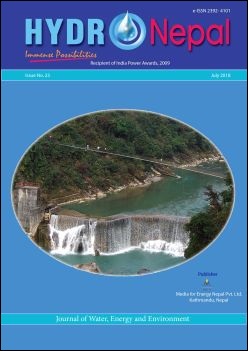Energy Banking with India : Path of Least Resistance
DOI:
https://doi.org/10.3126/hn.v23i0.20820Abstract
Once the 456 MW Upper Tamakoshi Hydroelectric Project is commissioned by the end of 2018, Nepal is expected to have surplus energy during the wet/monsoon season of 2019. Nepal’s Energy Ministry has decided to resolve this surplus issue through Energy Banking with India whereby Nepal exports her wet season power for India’s dry season import on “the same volume”. This is an extremely naïve assumption even if it is for the sake of mere negotiation. Discussing the short-sightedness of Energy Banking concept, this article stresses that Nepal should have, instead, activated the other two prevailing instruments of power trading, that of bilateral and regional 2014 Indo-Nepal Electric Power Trade, Cross-Border Transmission and Grid Connectivity Agreement and the 2014 SAARC Framework Agreement for Energy Cooperation (Electricity) respectively. Activating these two agreements would have ‘Open Sesame’-d the doors to Nepal’s growing hydropower capabilities – a win-win situation for both countries.
HYDRO Nepal Journal
Journal of Water, Energy and Environment
Issue: 23
Year: 2018
Downloads
Downloads
Published
How to Cite
Issue
Section
License
The copyright of the articles and papers published is held by HYDRO Nepal Journal.
The views and interpretation in this journal are those of author(s), and HYDRO Nepal does not bear any responsibility for the views expressed by authors in the journal.




